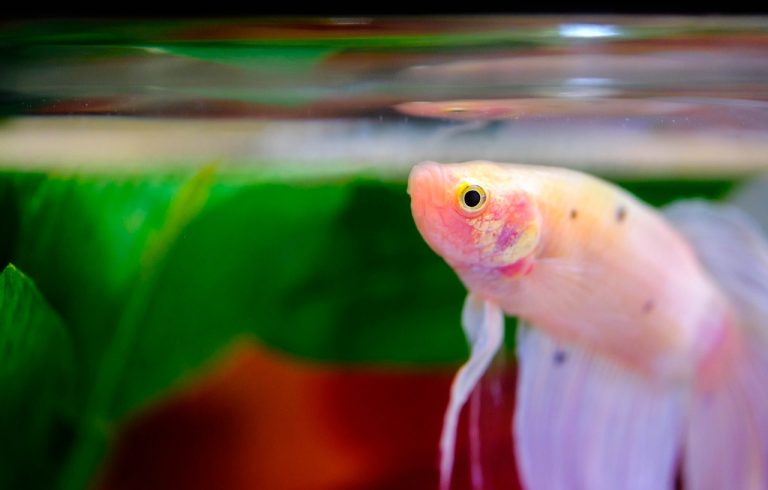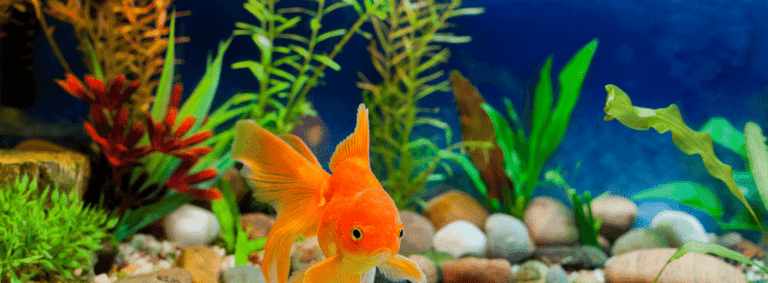Do you have a passion for fish and want to bring them into your home? Well, you’re in luck! This beginner’s guide to keeping fish will teach you everything you need to know about setting up and maintaining your very own home aquarium. We’ll cover everything from choosing the right tank and equipment to stocking it with the right fish and ensuring their health and well-being. So whether you’re a complete novice or just looking for some extra tips, read on for all the information you need to create a beautiful and thriving aquatic ecosystem in your own home!
Some images and links shown in this article may be affiliate links, we may earn a small commission if you use them, we hope you find the information useful and thank you if you do.
Choosing the right aquarium
The first step in setting up a home aquarium is choosing the right tank. When selecting an aquarium, consider both size and shape.
The tank should be large enough to accommodate the number and type of fish you want to keep, but also take into account the space you have available for it.
Rectangular tanks are typically easier to fit into smaller spaces than round tanks, but both have their advantages and disadvantages.
Once you’ve chosen the right size tank, you need to decide on the shape. If you’re looking for a modern look, try a round or curved tank. For a more traditional feel, a rectangular fish tank will work well.
Whichever style you choose, make sure the aquarium is made from a material that doesn’t scratch easily, try to avoid cheaper plastic fish tanks if possible.
What goes into an aquarium?
Depending on the type of fish you want to keep, either saltwater or freshwater fish will determine the items needed to include in your aquarium. Generally, most beginners start with a freshwater tank, as they are easier to maintain and don’t require the addition of salt. When stocking a freshwater aquarium, you’ll need to add some key items:
- Aquarium gravel: This is used to cover the bottom of the tank and provides a place for fish to swim and hide.
- Aquarium filter: This is used to circulate and clean the water in the tank.
- Heater: This is necessary to keep the water at a constant temperature, especially if you’re keeping tropical fish.
- Lighting: Fish need at least eight hours of light per day, so be sure to install an aquarium light.
- Aquarium plants: These not only look attractive but also provide a hiding place for fish and help to keep the water clean.
- Rocks or Coral: These can be used to create an attractive underwater landscape.
Cycle an aquarium before adding fish
Cycling an aquarium is essential to maintaining a healthy environment for your fish.
The cycle refers to the process of establishing a beneficial colony of bacteria in your filter that will help to break down fish waste and other organic matter.
This process can take several weeks, but it is well worth the effort to ensure that your fish have a clean and safe home.
There are a few different ways to cycle an aquarium, but the most common method is to use a fishless cycle.
Basically, after setting up an aquarium with all the items required for the fish such as a water filter, heater, lighting, gravel, decorations, rocks, or coral for saltwater fish.
It would then be necessary to add fish food and maintain the fish tank in the same way you would if fish were in the tank, what this does is allow the fish food to break down naturally within the tank in a similar way to fish waste.
Using a fish water testing kit you can test the water quality weekly and make water changes if necessary, this will help to maintain the cycle and keep the ammonia levels low.
Once the aquarium has cycled you can then add your fish, adding fish too early can cause problems with the cycle and affect the health of your fish.
To speed this process up there are products that will allow you to cycle an aquarium without fish, these work by adding a concentrated source of ammonia to the tank.
Choosing fish for an aquarium
When choosing fish for a home aquarium, it is important to consider the size of the fish, the water temperature, and the other fish in the tank.
For example, goldfish require cold water and plenty of space to swim, so they are not a good choice for a small fish tank. In contrast, bettas can live in warmer water and do not need as much room to swim, making them a better option for a smaller aquarium.
It is also important to research which fish are compatible with each other. Some fish are aggressive and will fight with other fish, while others are more docile and can coexist peacefully.
By taking these factors into account, it is possible to choose the right fish for any home aquarium.
How to maintain a home aquarium
Once your aquarium is set up, it’s important to keep it running smoothly so that your fish can thrive. Here are some tips on how to maintain your home aquarium:
- Check the water temperature regularly and adjust the heater as necessary if needed.
- Test the water quality regularly with a water test kit and make changes to the water as necessary.
- Clean the aquarium gravel and decorations every week or two using a gravel cleaner.
- Change 25% of the water in the tank every week or two weeks depending on the amount of fish you keep.
- Feed your fish a varied diet of both flakes and live food.
- Keep a close eye on your fish to ensure they are healthy and thriving.
- Use water dechlorinator when using tap water.
Tools required for aquarium maintenance
There are a few essential tools that are needed for proper aquarium maintenance:
- Gravel cleaner to clean the gravel within the tank.
- Water test kit to test the water quality.
- Aquarium salt (for saltwater tanks only) to add if necessary.
- Siphon hose to remove water from the tank.
- Plant scissors for pruning plants that begin to get a little overgrown.
- Glass scraper to clean unwanted algae from the inside of the tank.
- Fish net to catch and remove fish from the tank or to skim large debris from the surface water.
Heating a home aquarium
One of the most important factors in keeping fish healthy is maintaining the correct water temperature.
Most fish require a water temperature of between 65 and 78 degrees Fahrenheit, so it is necessary to use a heater to keep the aquarium at the correct temperature.
Heaters can be purchased in a variety of sizes to suit any size aquarium.
Positioning an aquarium
When positioning an aquarium, it is important to take into account the amount of space you have available and the type of light you will be using.
Aquariums should not be placed in direct sunlight, as this can cause the water to heat up too much and harm the fish. Instead, choose a spot where the aquarium will receive indirect light.
Filtering an aquarium
One of the most important factors in keeping a home aquarium healthy is ensuring proper filtration.
There are a variety of different aquarium filters available on the market, so it is important to choose the one that is best suited for your aquarium.
In general, there are three types of filters: mechanical filters, chemical filters, and biological filters.
Mechanical filters remove large debris from the water, chemical filters remove pollutants and unwanted chemicals, and biological filters provide a place for bacteria to grow that helps to break down waste products.
Lighting a home aquarium
Another important factor in keeping fish healthy is providing the correct amount of light.
Most fish require between eight and twelve hours of light per day, so it is necessary to use fluorescent light or LED light to provide enough light.
When choosing an aquarium light, be sure to get one that is the correct size for your aquarium.
Choosing the right fish food
In order to keep your fish healthy and thriving, it is important to feed them a varied diet of both flakes and live food.
Flakes are a good staple diet for most fish, while live food such as brine shrimp, bloodworms, and Daphnia can be used to add variety.
Always check which types of fish food are best suited for the types of fish you keep.
Cleaning an aquarium
It is important to clean your aquarium on a regular basis to keep it healthy for your fish.
This can be done by using a gravel cleaner to clean the gravel every week or two, changing 25% of the water every week or two, also ensuring that any filter cartridges or pads are cleaned regularly to stop any build-up of waste.
When cleaning filters always do this in the water that is removed from the fish tank so that they are not exposed to any outside contaminants.
Feeding your aquarium fish
It is important not to overfeed your aquarium fish as this can lead to poor water quality and health problems for the fish.
In general, it is best to feed your fish a small amount of food once or twice per day.
When feeding, be sure to give your fish enough time to eat all of the food before removing any uneaten food from the tank.
Add enough food that lasts them for 3 to 4 minutes feeding that way you will know they are not overfed, fish will always appear hungry even if they are not!
Waste food simply sinks to the bottom of the tank and causes bacteria to develop that can cause a spike in ammonia levels.
Conclusion
By following these simple guidelines, you can help to keep your home aquarium healthy and thriving for years to come. By providing a healthy environment with the correct levels of light, heat, filtration, and food, you can ensure that your fish will be happy and healthy.
We hope you enjoyed this beginner’s guide to keeping fish, so why not take the plunge and set up your own home aquarium today?











